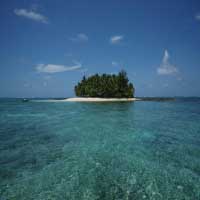I have permission to post this anonymously:
"I am a ship captain. You do not consider ocean currents play a major part of how shipping routes are planned. Your example of the Gulf Stream illustrates the point. Going north from Florida up to main, the Gulf Stream current is more or less 3 knots. There is a website that indicates how far off the coast the Gulf Stream is at any time. A prudent mariner looks at the current tables and plans accordingly. A 8 knot vessel goes 11 knots Northbound from Florida to New York, but on the same exact route would only go 5 knots southbound. That is over a 100% difference. Steaming south, you may set your course to go out two, three hundred or even four hundred miles out to sea to escape the Gulf Stream current.
Likewise in the North Pacific, the favorable currents eastbound are below the Aleutians. You cannot sail too close to the Islands (google Selendang Ayu) http://juneauempire.com/stories/120905/sta_20051209021.shtml .
Ships usually travel through Unimak Pass to get to the Bering Sea en route to Asia as it is the safest route, the tides and currents in the Aleutian Islands are well known to be treacherous.
The currents in the Bering Sea favor Westbound traffic."

